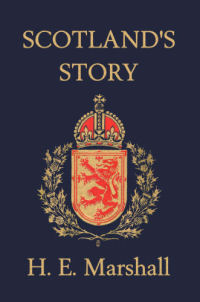
HOME
INTRO
SYMBOLS
ALMANAC
ECONOMY
GEOGRAPHY
STATE MAPS
PEOPLE
FORUM
NEWS
COOL SCHOOLS
STATE QUIZ
STATE LINKS
BOOK STORE
MARKETPLACE
NETSTATE.STORE
NETSTATE.MALL
GUESTBOOK
CONTACT US


Tennessee State Tartan

Official Tennessee Tartan: STA No. 4167
The Scottish Register of Tartans
The project to name an official state tartan for the State of Tennessee was spearheaded by members and officers of the Heart of Tennessee Scottish Celebration.
Senate Bill No. 73, documented below, offers good basic information regarding the process by which this tartan was adopted as the official tartan of the State of Tennessee.
It was passed in the Tennessee General Assembly and passed on to Governor Don Sundquist on March 25, 1999.
This tartan became the official state tartan of Tennessee on April 7, 1999 when Governor Don Sundquist allowed Senate Bill No. 73 to become law without his signature.
NOTE: The Heart of Tennessee Scottish Celebration Tennessee Highland Games were suspended after the 2007 games.
PUBLIC ACTS, 1999
CHAPTER NO. 82
SENATE BILL NO. 73
By Womack, Crowe
Substituted for: House Bill No. 61
By Eckles, Hood, McDonald, McMillan, McAfee, Davidson, Beavers
AN ACT To amend Tennessee Code Annotated, Title 4, Chapter 1, Part 3, relative to the designation of an official state tartan.
WHEREAS, In the eighteenth century a stream of adventurous people in search of political and religious freedom and economic opportunity poured down the Valley of Virginia and across the Appalachians from the Carolinas into the fertile territory stretching to the Mississippi; and
WHEREAS, A significant proportion of that stream of humanity had Scottish origins, some directly from Scotland and many by way of an intermediate stay in Ireland; and
WHEREAS, Those daring and enterprising people left their genetic and cultural stamp upon the people of this state and nation, producing leaders in politics, the military, medicine, business, the arts and many other fields of endeavor; and
WHEREAS, Many Tennesseans of Scottish descent continue to carry on the proud traditions of the forebears, and many celebrate those traditions as members of Scottish Societies; and
WHEREAS, The symbol most recognized as characteristic of Scots throughout the world is that element of the national dress of Scotland, the tartan - distinctive plaid patterns designating members of clans, primarily of the highlands of Scotland, or regions, or military units, or political causes; and
WHEREAS, The officers and members of the Heart of Tennessee Scottish Celebration approached the other Scottish Societies of this state concerning the desirability of adopting an official state tartan to commemorate the important part played by persons of Scottish descent in the history of Tennessee, and designed a tartan of colors and symbolism relevant to this state; and
WHEREAS, The colors of the tartan are natural white, representing the unity of the three Grand Divisions of the State of Tennessee; dark green, representing the importance of agriculture to the state; purple, representing the state flower, the Iris; red, representing the sacrifices made by Tennessee soldiers and pioneers; and dark blue, representing the mountains of Tennessee; and
WHEREAS, The Heart of Tennessee Scottish Celebration is working closely with Lord Lyon, King of Arms and the Scottish Tartan Society in Edinburgh to secure recognition for the Tennessee Tartan, and with Barbara Pierpont of Edmonton, Kentucky, official weaver for Clan Donald Mid-South in determining the tartan design specifications; and
WHEREAS, John Mauldin, President of the Heart of Tennessee Scottish Celebration, Bill Bickford, Chair of the Tartan Committee, and many others have worked diligently to present an official state tartan for adoption prior to national Tartan Day on April 6; now, therefore,
BE IT ENACTED BY THE GENERAL ASSEMBLY OF THE STATE OF TENNESSEE:
SECTION 1. Tennessee Code Annotated, Title 4, Chapter 1, Part 3, is amended by adding the following as a new section:
Section _. The design adopted by the Heart of Tennessee Scottish Celebration in conjunction with all the other Scottish Societies in Tennessee is designated as the official state tartan for Tennessee. The design is described as follows: A symmetrical tartan sett, using the following colors: natural white, dark green, purple, red, and dark blue. The colors shall be employed in a thread count of white - 2, green - 20, purple - 2, green - 12, red - 2, green - 2, purple - 2, white - 2, blue - 20 and red - 4. The pattern pivot is red line to return to green 20.
SECTION 2. This act shall take effect upon becoming a law, the public welfare requiring it.
The following information regarding threadcount and pallet for the Carolina tartan is provided by the The Scottish Register of Tartans: The National Archives of Scotland.
Threadcount:
R4B20W2M2G2R2G12M2G20W2
Pallet:
- R=DC0000 RED;
- B=2C4084 BLUE;
- W=E0E0E0 WHITE;
- M=781C38 RED;
- G=005020 MOD GREEN.
Tennessee Law
The following information was excerpted from the Tennessee Code Annotated, Title 4, Chapter 15, Part 3, Section 4-1-323.
Title 4 State Government
Chapter 1 General Provisions
Part 3 State Symbols
Tenn. Code Ann. § 4-1-323 (2011)
4-1-323. Official state tartan.
The design adopted by the Heart of Tennessee Scottish Celebration in conjunction with all the other Scottish Societies in Tennessee is designated as the official state tartan for Tennessee. The design is described as follows: A symmetrical tartan sett, using the following colors: natural white, dark green, purple, red, and dark blue. The colors shall be employed in a thread count of white - 2, green - 20, purple - 2, green - 12, red - 2, green - 2, purple - 2, white - 2, blue - 20 and red - 4. The pattern pivot is red line to return to green 20.
HISTORY: Acts 1999, ch. 82, sect; 1.
Sources...
The State of Tennessee. Tennessee Code Annotated. Nashville: The State of Tennessee, 2011. Web. 18 Aug 2011.
Tennessee General Assembly. House Bill No. 73. Nashville:The State of Tennessee, 2011. Web. 21 Sep 2011.
Simbeck, Rob. Tennessee State symbols. 2nd Edition. Knoxville: The University of Tennessee Press, 2002. 126-128. Print.
Shearer, Benjamin F. and Barbara S. State Names, Seals, Flags and Symbols: A Historical Guide Third Edition, Revised and Expanded. Westport, Conn: Greenwood Press, 3 Sub edition, 2001.
Additional Information
A History of Scottish Kilts: From the website of Authentic Ireland Travel.
The History of Scottish Tartans & Clans Tartans: Scottish History Online.
A Short History of Tartan: Peter MacDonald Tartan Design & Consultancy
More symbols & emblems: Complete list of official Tennessee state symbols from NETSTATE.COM.

Scotland's Story
by H. E. Marshall
Scotland's Story, by H. E. Marshall. 552 pages. Yesterday's Classics (December 19, 2005) Reading level: Ages 9-12. A child's history of Scotland, from legendary days through the time when the kingdoms of Scotland and England were joined together. Relates in vigorous prose the thrilling exploits of the heroes and heroines who defended Scotland from its English invaders. Includes the stories of Macbeth, William Wallace and Robert the Bruce, Mary Queen of Scots, the poet king and the beautiful lady of the garden, the "Glen of Weeping" and many others. First published a century ago, from the author of the highly-acclaimed "Our Island Story."
Scotland: The Story of a Nation, by Magnus Magnusson. 752 pages. Grove Press (January 17, 2003) Drawing on a great deal of modern scholarship that has redefined the nation's story, Magnusson vividly re-creates the long and fascinating story of Scotland, offering the most up-to-date and comprehensive history available today. Magnusson, who received an honorary knighthood for his contributions to the preservation of Scotland's heritage, casts the nation's historical trajectory as a long struggle toward nationhood. He explains the roots of the original Scots and examines the extent to which Scotland was shaped by the Romans, the Picts, the Vikings, and the English. He casts a sober eye on the many historical myths that have developed over the years, assessing their credibility while giving full appreciation of their importance to the people of Scotland.

Tartan: Romancing the Plaid
by Jeffrey Banks, Doria de La Chapelle
Tartan: Romancing the Plaid, by Jeffrey Banks, Doria de La Chapelle. 288 pages. Rizzoli; illustrated edition edition (October 23, 2007) Fashion world insiders Jeffrey Banks and Doria de La Chapelle have written the definitive book on tartan, bringing together a dizzying array of images to tell the story of tartan's humble beginnings to its current status as the ultimate emblem of great taste and high fashion. In addition to chronicling tartan enthusiasts from every age - including the incomparably fashionable Duke of Windsor whose closet was jam-packed with tartan kilts - Tartan profiles the designers who've made tartan an integral part of their work, from punk-inspired provocateurs Vivienne Westwood, Jean-Paul Gaultier, and Alexander McQueen to the more refined fashions of titan Ralph Lauren and Burberry.
Learning to Weave, by Deborah Chandler. 232 pages. Interweave Press; Revised edition (March 1, 1995) Learning to Weave has become the standard text book for both teachers and self-taught weavers. All you need to know is here including warping, reading and designing drafts, and the basics of weave structures. Warping back to front is included as well as updated resource lists.
Tartan: The Highland Textile, by James D. Scarlett. 204 pages. Shepheard-Walwyn (January 1, 1990) This is one of the tartan classics by Jamie Scarlett, éminence gris of the tartan scene. First published in 1985 and revised and reprinted in 1995 due to popular demand. A slim, stylish book providing the weaver and student with invaluable information on tartan and its weaving.
The Tartan Weaver's Guide, by James D. Scarlett. 68 pages. Shepheard-Walwyn Publishers (1995) Combines practical experience with a grasp of Highland social history in this book, which although aimed specifically at the amateur tartan-weaver, contains much of which will be of interest to students of either subject.

